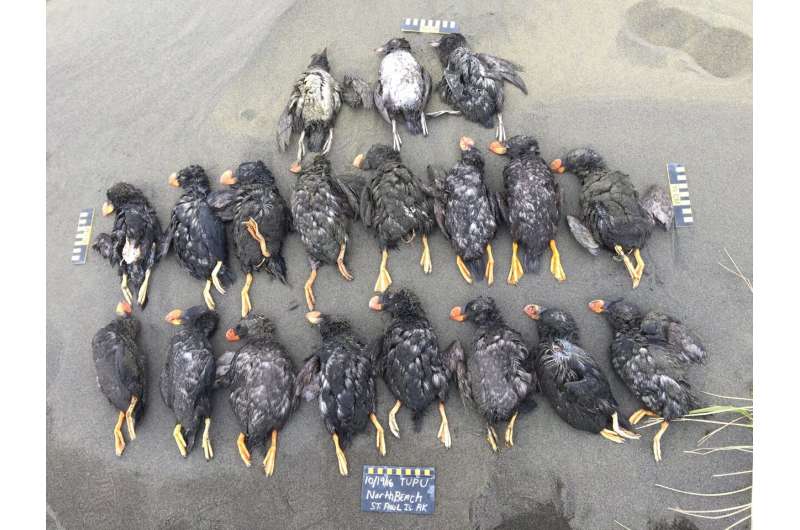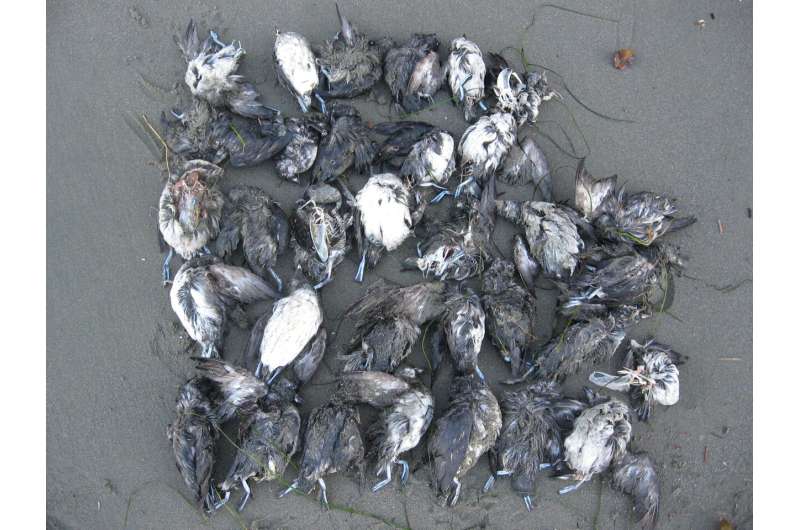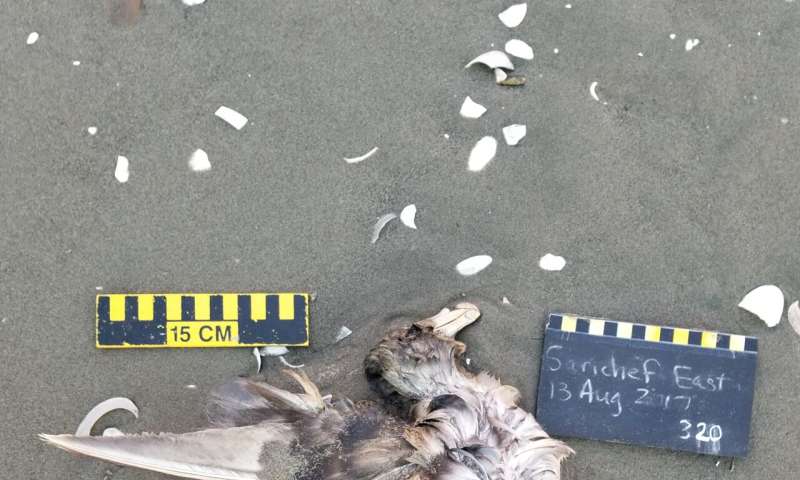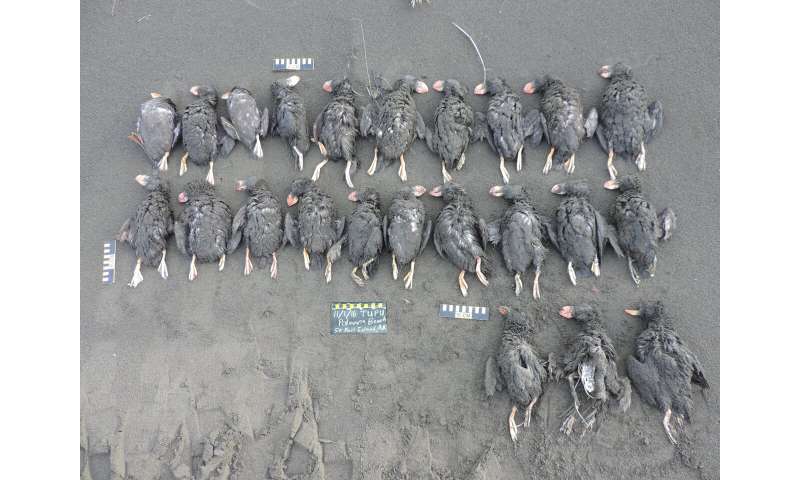This article has been reviewed according to Science X's editorial process and policies. Editors have highlighted the following attributes while ensuring the content's credibility:
fact-checked
peer-reviewed publication
trusted source
proofread
Marine heat waves caused mass seabird die-offs, beach surveys show

Seabirds, from cormorants to puffins, spend most of their lives at sea. Beloved by birdwatchers, these animals can be hard to study because they spend so much time far from shore.
New research led by the University of Washington uses data collected by coastal residents along beaches from central California to Alaska to understand how seabirds have fared in recent decades. The paper, published in the journal Marine Ecology Progress Series, shows that persistent marine heat waves lead to massive seabird die-offs months later.
"This is truly a global data set that asked a global-sized question: Does a warming world significantly impact marine birds, among the top predators in the nearshore marine environment?" said co-author Julia Parrish, a professor of aquatic and fishery sciences at the UW and executive director of the Coastal Observation and Seabird Survey Team, known as COASST.
"We find a dramatic delayed effect," she said. "A warmer ocean, and certainly a suddenly warmer ocean as happens during an El Niño or a marine heat wave, will result in the death of hundreds of thousands to millions of marine birds within one to 6 months of the temperature increase."
Marine heat waves have only recently gained attention. They include the unusually warm ocean surface off the Pacific Northwest nicknamed "the blob" that persisted from 2014-2016, as well as prolonged El Niño events and warmer oceans in Alaska associated with retreating sea ice.

The UW team's previous research linked recent ocean warming to individual die-offs among seabirds, including common murres, Cassin's auklets and tufted puffins. This study takes a broader approach.
"Rather than track the specific numbers of any one species, this study measures the magnitude of mortality events, regardless of seabird species, above long-term normal," Parrish said. "We asked: What rate are carcasses washing in, over what portion of coastline, and for how many months? Larger-magnitude events are those that push up all these measures."
The study used surveys of beach-cast birds from 1993 to 2021 between central California and Alaska. Truly massive mortality events, with death tolls most likely exceeding a quarter million birds, occurred roughly once per decade. But between 2014 and 2019, five events met this mortality threshold.
"This is unprecedented. This type of massive die-off can be compared to a catastrophic storm that we would usually expect once per decade; they happen, causing massive damage, but usually there is enough time for areas to recover," said lead author Timothy Jones, a UW research scientist in aquatic and fishery sciences. "From 2014 to 2019, the die-offs were not only some of the largest ever documented, but they kept happening year after year—like a catastrophic storm hitting without fail every year."
-

A Northern fulmar is pictured in August 2017. Many seabirds such as this bird died over several years as the northern Bering and Chukchi seas underwent significant warming and loss of sea ice. Credit: COASST -

Tufted puffins are pictured in November 2016. Credit: Aleut Community of St. Paul Island Ecosystem Conservation Office
Analysis shows that these extraordinary die-offs were statistically linked to persistently warmer conditions in the Northeast Pacific in the preceding months. Some birds, including murres, puffins, auklets and shearwaters, suffered much more than others.
The study included more than 90,000 surveys of 106 seabird species on more than 1,000 beaches, collected by four citizen science projects. The largest area was covered by the UW-based COASST program, spanning northern California to Alaska. Additional data came from BeachCOMBERS and Beach Watch, both in central California, and the British Columbia Beached Bird Survey, in Canada. These organizations train participants to search local beaches for dead birds and submit their findings.
Additional data for remote northwest Alaska beaches came from community members' reports to the U.S. Fish and Wildlife Service and Alaska Sea Grant.
The data show that carcasses began to wash up a few months after the warming began and followed a roughly three-year pattern. The exact cause of each die-off is different, but all are related to warming. Warmer water can promote harmful algal blooms and increase the likelihood of disease outbreaks, both of which provoked seabird mortality events during the study period. Most notably, prolonged ocean warming changed the type, abundance and nutritional value of seabirds' prey, leading to widespread starvation, the authors said.
"With this intensity of warming, like the looming El Niño in the Pacific or the current marine heatwave in the North Atlantic, we are facing a new ocean," Parrish said. "One with fewer birds."
More information: T Jones et al, Marine bird mass mortality events as an indicator of the impacts of ocean warming, Marine Ecology Progress Series (2023). DOI: 10.3354/meps14330
Journal information: Marine Ecology Progress Series
Provided by University of Washington





















